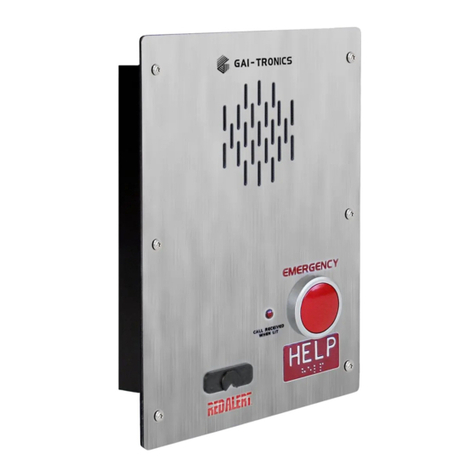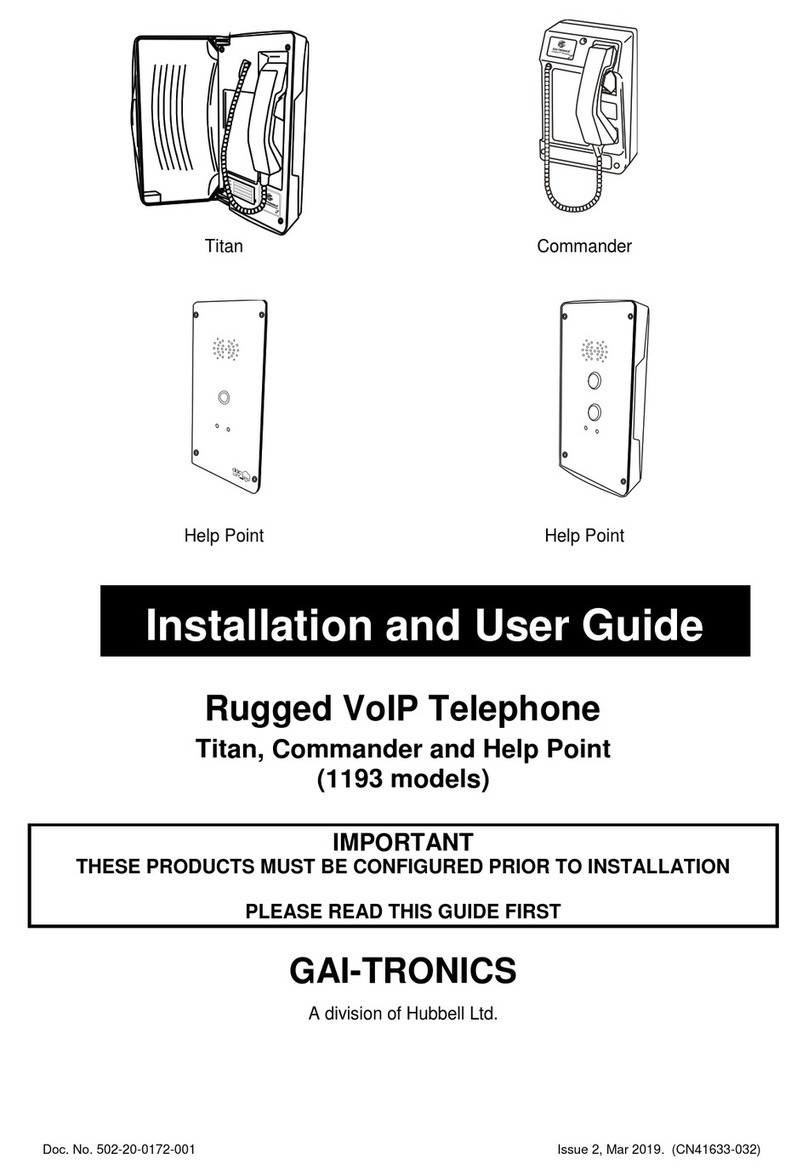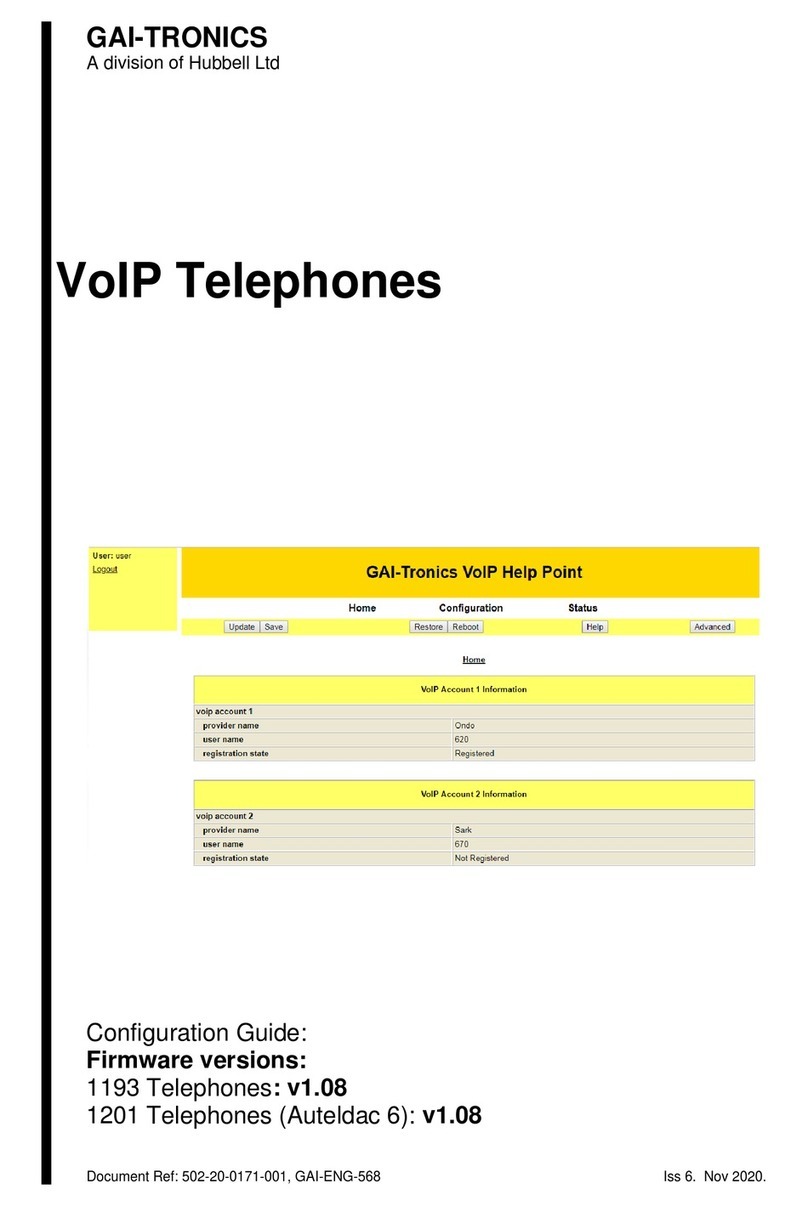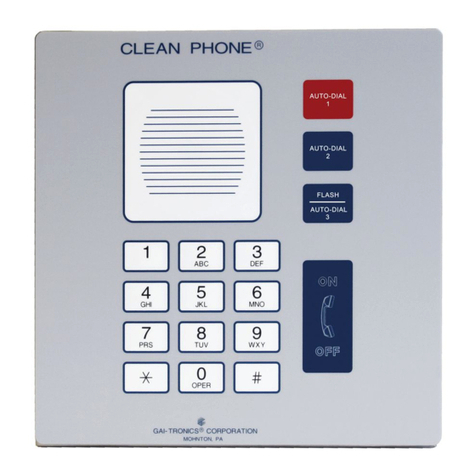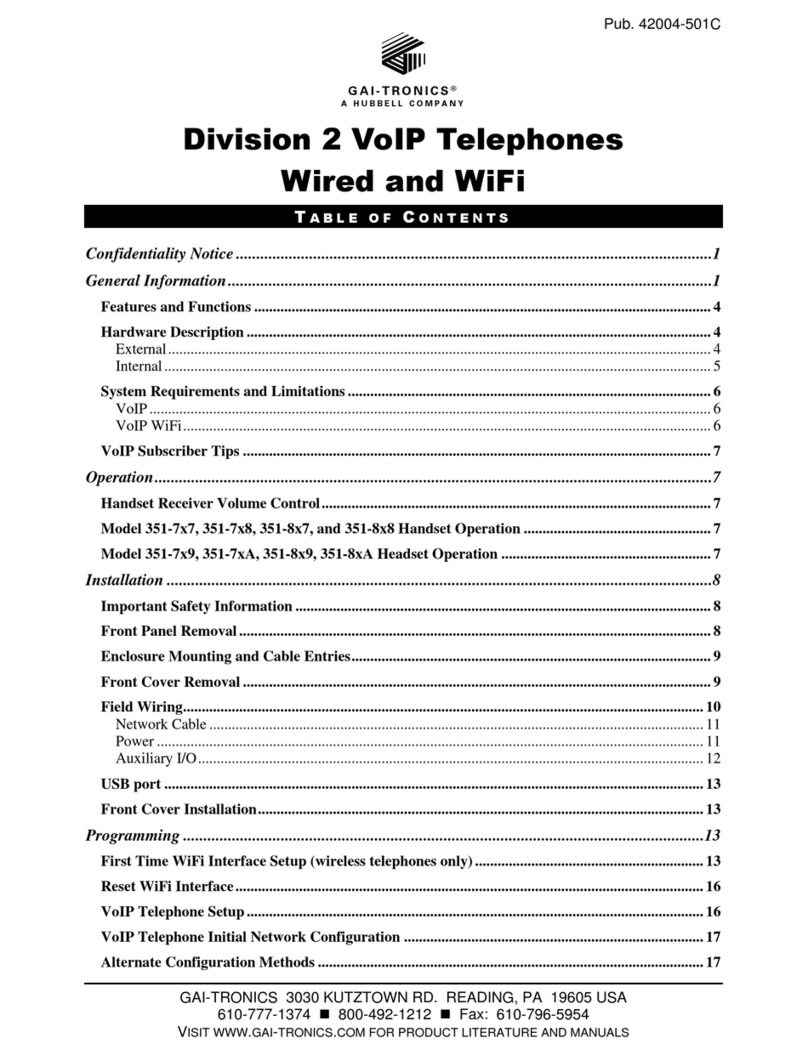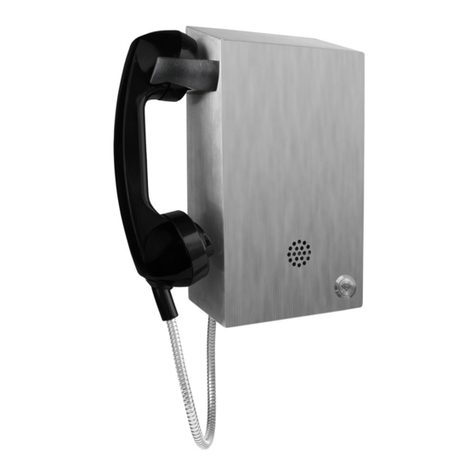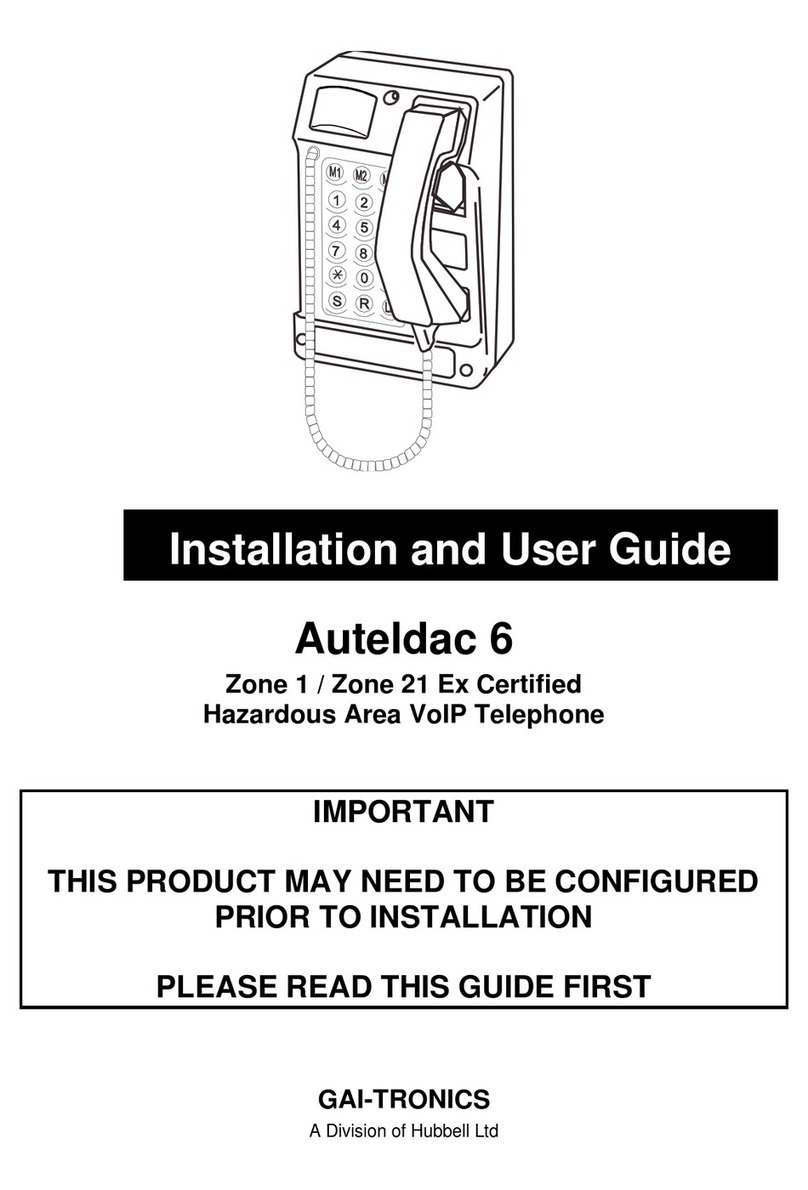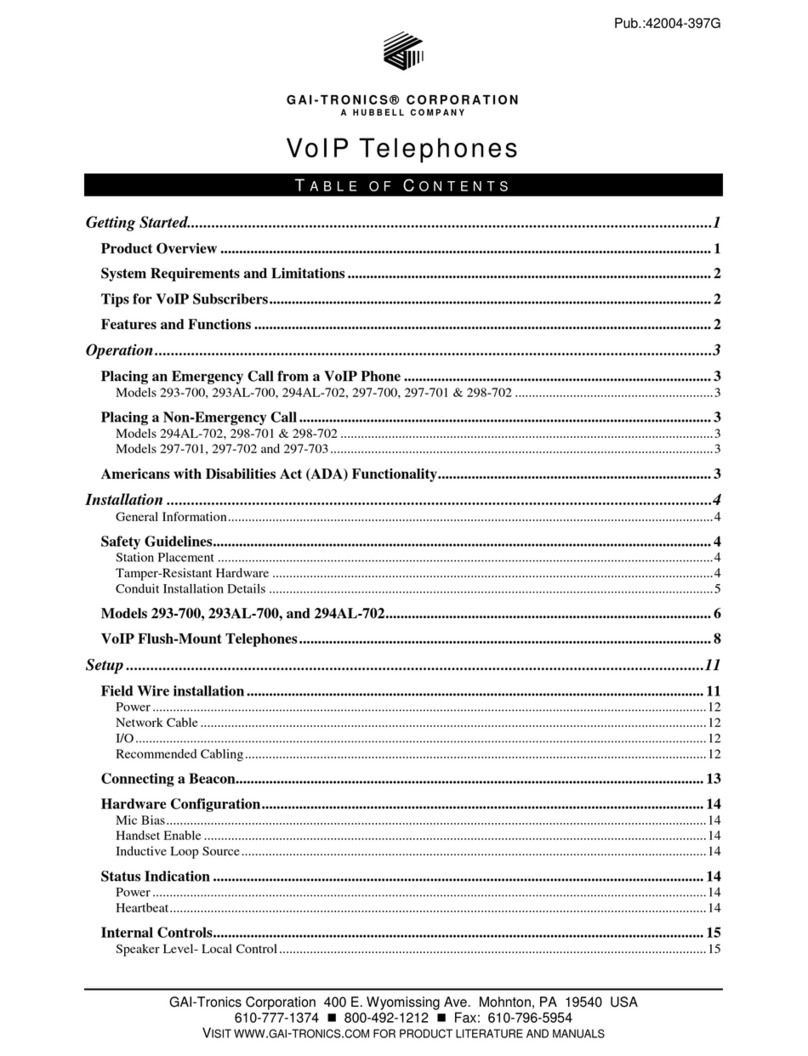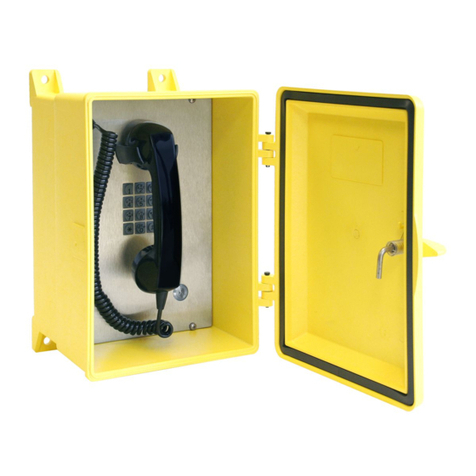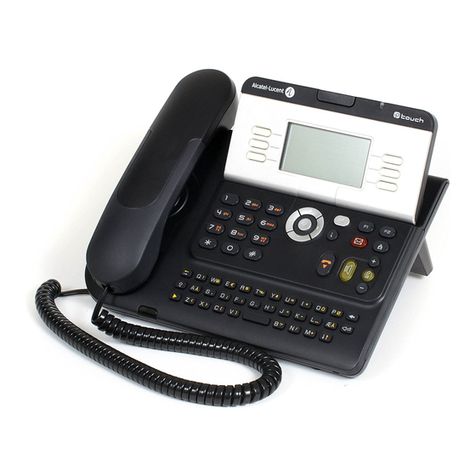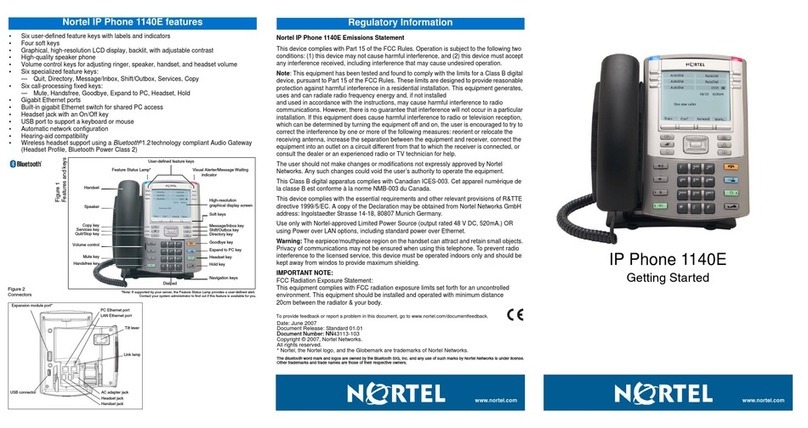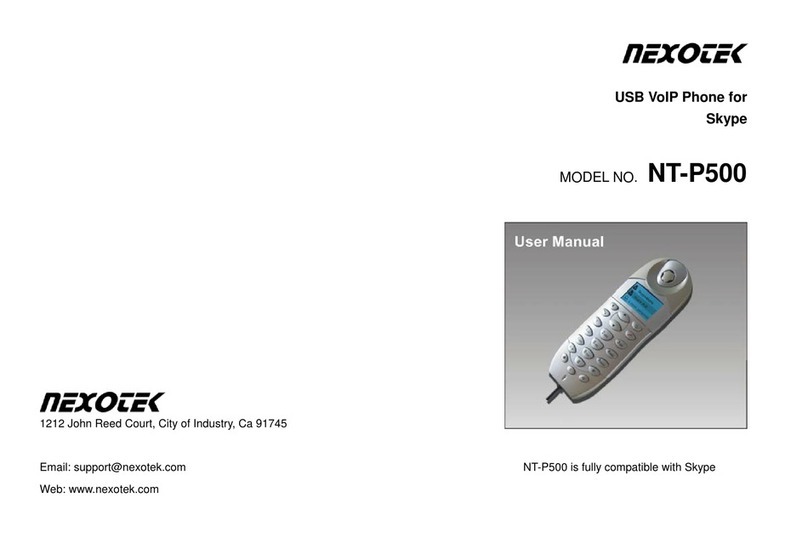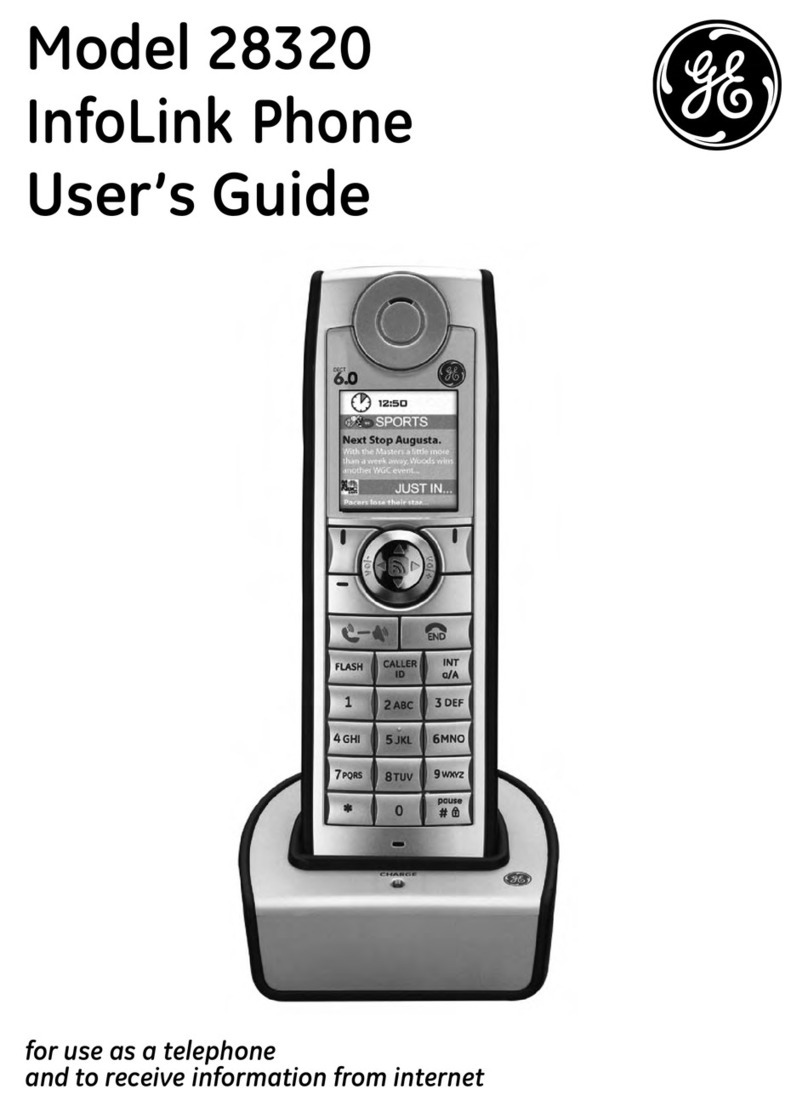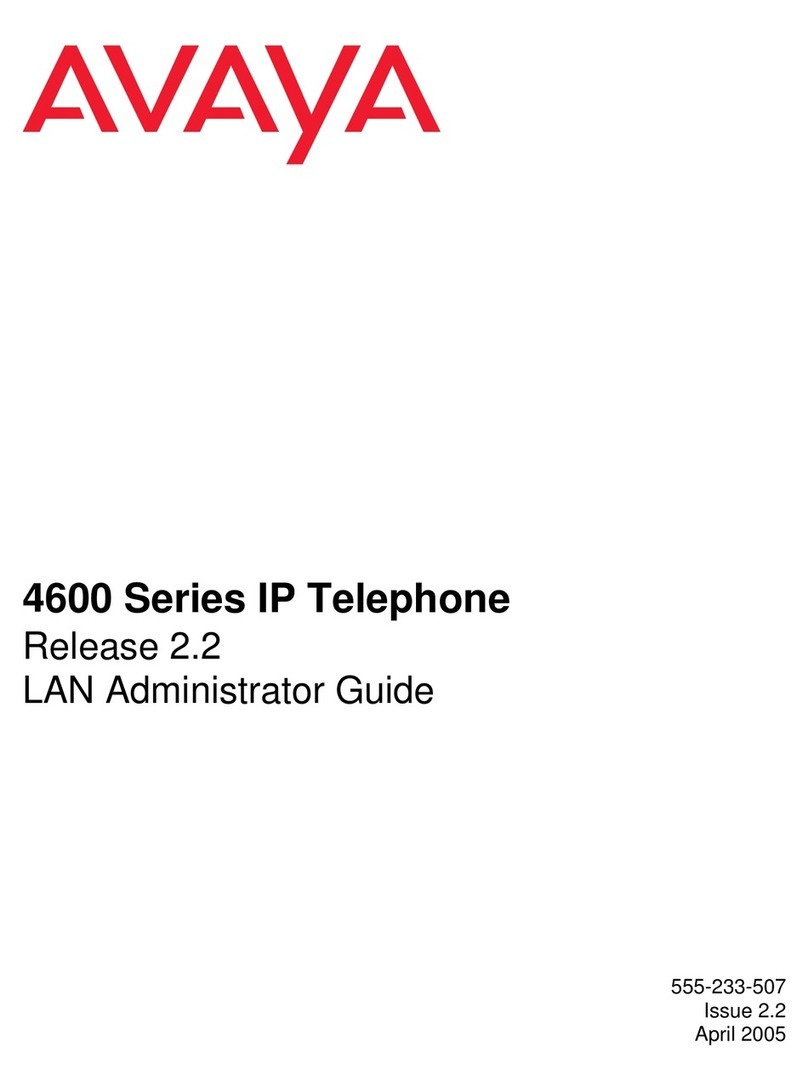Pub. 42004-456D
G A I - T R O N I C S ®
A H U B B E L L C O M P A N Y
Division 1 VoIP Telephones
TA B L E O F CO N T E N T S
GAI-TRONICS 3030 KUTZTOWN RD. READING, PA 19605 USA
610-777-1374 ◼800-492-1212 ◼Fax: 610-796-5954
VISIT WWW.GAI-TRONICS.COM FOR PRODUCT LITERATURE AND MANUALS
Confidentiality Notice.....................................................................................................................1
General Information.......................................................................................................................1
Features and Functions ..........................................................................................................................2
System Requirements and Limitations.................................................................................................2
VoIP Subscriber Tips .............................................................................................................................2
Hardware Description............................................................................................................................2
External.................................................................................................................................................2
Internal..................................................................................................................................................4
Operation.........................................................................................................................................4
Handset/Headset Receiver Volume Control.........................................................................................4
Model 352-701 Handset Operation........................................................................................................4
Model 352-703 Headset Operation........................................................................................................5
Headset Connection.............................................................................................................................. 5
Place a call:..........................................................................................................................................6
Installation ......................................................................................................................................7
Installation Guidelines............................................................................................................................7
Mount the Telephone..............................................................................................................................8
Cable Entries...........................................................................................................................................8
Front Cover Removal.............................................................................................................................9
Field Wiring.............................................................................................................................................9
Power ....................................................................................................................................................9
Network Cable....................................................................................................................................11
Auxiliary I/O.......................................................................................................................................11
Front Cover Installation.......................................................................................................................12
Programming ................................................................................................................................13
VoIP Telephone Setup..........................................................................................................................13
Alternate Configuration Methods .......................................................................................................13
Input Contacts.......................................................................................................................................13
Output Contacts....................................................................................................................................14
Maximum (Handset Receiver) Level Remote Control ......................................................................14
Maintenance..................................................................................................................................14
Status Indication...................................................................................................................................14
